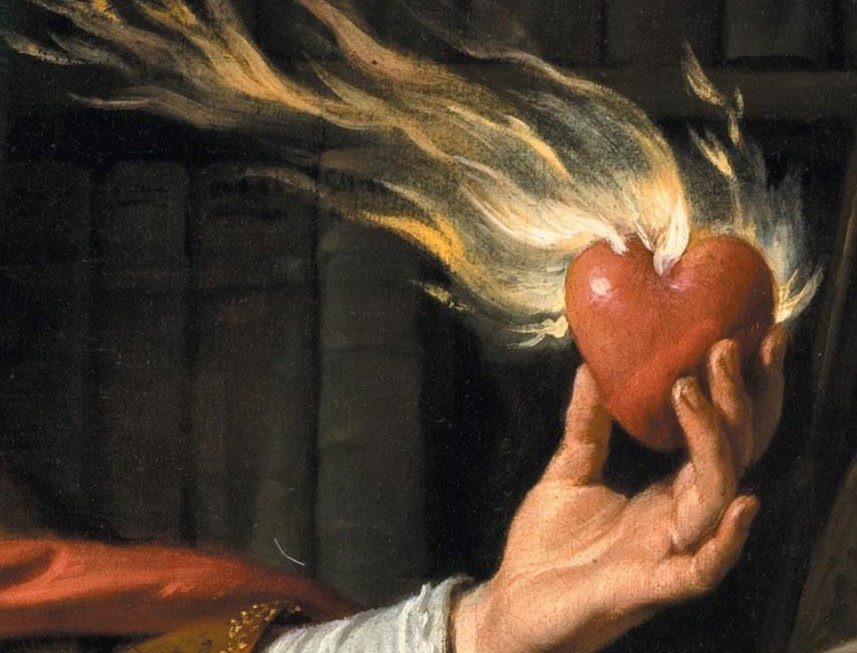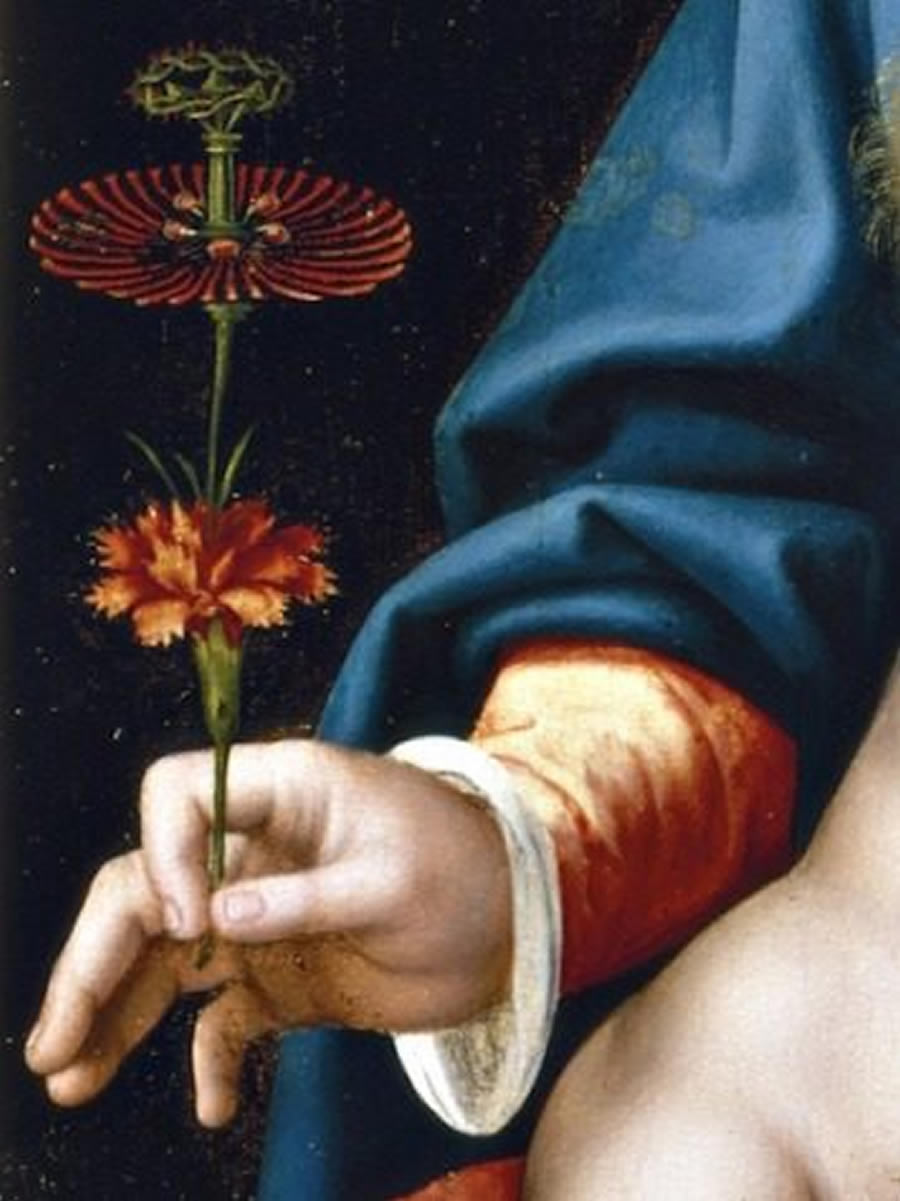MISTICHE – CUORI SACRI. Ebbre di desiderio, prive di tutto
MISTICHE – CUORI SACRI. Ebbre di desiderio, prive di tutto
FLORILEGIO
a cura di Rita Selvaggio e Sofia Silva
Ricerca Iconografica e Apparati: Chiara Di Maria, Valentina Rubino
27 ottobre 2022 – 26 gennaio 2023
Si tratta di due antologie digitali che, in formato newsletter a cadenza settimanale, si intrecciano e accompagnano la mostra per tutta la sua durata.
Programma legato ai temi di “PUPILLE. Ci fioriscono gli occhi se ci guardiamo”, mostra collaterale di “Masaccio e Angelico. Dialogo sulla verità nella pittura” promossa e organizzata dal Comune di San Giovanni Valdarno e inserita nel progetto “Terre degli Uffizi” ideato e realizzato da Gallerie degli Uffizi e Fondazione CR Firenze, all’interno delle rispettive iniziative “Uffizi Diffusi e Piccoli Grandi Musei”.
MISTICHE – CUORI SACRI. Ebbre di desiderio, prive di tutto
Frammenti letterari, documenti, approfondimenti storici intorno al misticismo medievale e non solo, in relazione all’economia, culturale e visiva, del marginale. Insieme agli interventi di artisti, pensatori e studiosi vengono proposte testimonianze di sante e monache, da Angela da Foligno a Santa Veronica Giuliani a Ildegarda di Bingen – farmacista di Dio – ; interventi di intellettuali quali René Guénon a proposito dell’iconografia del cuore raggiante e fiammeggiante. Si ripercorrono i passaggi più commoventi di grandi scrittrici attratte dal misticismo tra cui Simone Weil e Cristina Campo. Le narrazioni della mostra PUPILLE scorrono in parallelo a quelle dei programmi on-line, affinché il pubblico disponga di un intero vocabolario per ascoltare il rapporto tra il sacro, il femminino, il desiderio che si esprime in trascendenza, la visionarietà di una spiritualità che trascende l’individuo.
FEMALE MYSTICS – SACRED HEARTS: Drunk with desire, lacking all
FLORILEGIUM
curated by Rita Selvaggio and Sofia Silva
Iconographic research and appendices: Chiara Di Maria, Valentina Rubino
27 October 2022 – 26 January 2023
These are two digital anthologies that, in the format of a weekly newsletter, intertwine with and accompany the exhibition for its entire duration.
FEMALE MYSTICS – SACRED HEARTS: Drunk with desire, lacking all
Literary fragments, documents, historical analyses of mediaeval mysticism and more, in relation to the cultural and visual economy of the marginal. Alongside interventions by artists, thinkers and scholars are presented testimonies of female saints and nuns, from Angela da Foligno to Santa Veronica Giuliani to Hildegard of Bingen – pharmacist of God – ; as well as contributions from intellectuals, like René Guénon’s examination of the iconography of the radiant and flaming heart. And then citations of some of the most moving passages by great women writers drawn to mysticism, such as Simone Weil and Cristina Campo. The narrations of the exhibition PUPILS run in parallel to those of the online programmes, so that a whole vocabulary is made available to the public with which to probe the relationship between the sacred, the feminine, the desire that finds expression in transcendence and the visionary nature of a spirituality that surpasses the individual.

Philippe de Champagne (Bruxelles,1602 – Parigi,1674), Sant’Agostino cardioforo, 1645-1650, olio su tela, 78.74×62.23 cm, Los Angeles, County Museum of Art. Particolare.
“Sagittaveras tu cor meum charitate tua”
Agostino, Confessioni, 9,2,3
“Hai trafitto il mio cuore con il tuo amore” scrive Agostino rivolgendosi a Dio. Iconografia frequente nella pittura di XVII secolo, il santo “cardioforo” è colui che tiene in mano un cuore “infiammato” o trafitto da una freccia, come segno di profondo amore per Dio. La più conosciuta tra le iconografie di questo genere è quella di Sant’Agostino di Ippona (354-430). L’immagine che presenta il ciclo MISTICHE – CUORI SACRI è per l’appunto un dettaglio di Agostino “cardioforo” dal pittore francese Philippe de Champaigne (1645-1650). La verità della Rivelazione accende le fiamme attorno al cuore pulsante del santo, attraversandone lo sguardo e alimentando così l’attività di studio delle Sacre Scritture. Gli occhi di Sant’Agostino osservano direttamente quella «tenebra luminosa», come descritta da Giovanni della Croce, la luce informe ne attraversa le pupille e la mente, lasciandolo con le labbra appena schiuse.
MISTICHE – CUORI SACRI intende ricostruire il momento dell’estasi attraverso le parole di molti spiriti illustri che si sono espressi in epoche diverse anche attraverso i loro riti domestici, nonché le loro spinte pulsionali e sacrificali. La monaca e mistica francese Santa Margherita, che si distinse nella sua vita per la particolare devozione al Sacro Cuore di Gesù, tanto da ispirarne la festa, si esprimeva quasi lo avesse dinanzi agli occhi: «Ho visto questo Cuore divino come in un trono di fiamme, più brillante del sole e trasparente come cristallo».
“Sagittaveras tu cor meum charitate tua”
Augustine, Confessiones, 9,2,3
‘You pierced my heart with the arrow of your love,’ wrote Augustine, addressing himself to God. The saint bearing a ‘flaming’ heart or one pierced by an arrow, as a symbol of deep love of God, was a frequent image in the iconography of 17th-century painting. The best known of the images of this kind is that of St Augustine of Hippo (354-430). The one that presents the series FEMALE MYSTICS – SACRED HEARTS is in fact a detail of a picture of Augustine ‘bearing his heart’ by the French painter Philippe de Champaigne (1645-50). The truth of Revelation kindles flames around the beating heart of the saint, passing through his gaze and strengthening his study of the Holy Scriptures. St Augustine’s eyes peer directly into that ‘luminous darkness’, as John of the Cross described it; the formless light passes through his pupils and mind, leaving him with his lips barely parted in awe.
FEMALE MYSTICS – SACRED HEARTS sets out to reconstruct the moment of ecstasy through the words of many illustrious minds who have expressed themselves on the subject in different eras, through their domestic rites as well as their sacrificial impulses. The French nun and mystic St Margaret, who was renowned in her lifetime for her particular devotion to the Sacred Heart of Jesus, becoming the inspiration for the feast, spoke almost as if she had it before her eyes: ‘The Divine Heart was shown to me as on a throne of flames, more dazzling than the sun and transparent as crystal.’
In FLORILEGIO, il discorso sul misticismo incontra il simbolismo dei fiori e il significato che essi ricoprono in pratiche religiose, artistiche o curative.
In FLORILEGIUM, the discourse on mysticism encounters the symbolism of flowers and the significance they hold in religious, artistic or healing practices.

Joos van Cleve (Kleve,1485 – Anversa,1541), Madonna con Bambino, 1530-1535, olio su tavola, 61.1×46.4 cm, Cincinnati Institute of Fine Art. Particolare.
Florilegio, dal latino florilegium – composto da flos floris “fiore” e da legĕre “cogliere” –ossia “raccolta di fiori” prende le mosse dall’attività letteraria di padre Giovanni Pozzi, sacerdote, frate cappuccino, autore di un florilegio. «Un chiuso giardino è mia sorella, mia sposa» (4:12) recita il Cantico dei Cantici in un passo da sempre associato alla Vergine Maria e alla sua purezza. Nell’Hortus Conclusus i fiori venivano prevalentemente scelti per il loro carattere simbolico legato a Maria, madre e generatrice di Gesù e dispensatrice della grazia e di tutte le virtù. Il giglio, fiore bianco, sta per la purezza, l’innocenza e la verginità; la rosa senza spine rappresenta la Sulamita mai toccata dal peccato originale; le viole, emblemi di modestia e umiltà, stanno per la promessa del Regno celeste; il bucaneve rappresenta la primavera e dunque la speranza. L’aquilegia invece ricorda la colomba dello Spirito Santo, come anche il garofano – il cui nome latino Dianthus, deriva dal greco e significa “fiore di Dio” – che per la sua forma e il suo colore è legato alla Passione.
Florilegium, a mediaeval Latin word that is a combination of flos, floris ‘flower’ and legere ‘to gather’ – i.e. ‘collection of flowers’, came into widespread use as a result of the literary activity of Father Giovanni Pozzi, priest, Capuchin friar and author of a florilegium. ‘A garden enclosed is my sister, my spouse’ (4:12) declares the Song of Songs in a passage that has always been associated with the Virgin Mary and her purity. In the Hortus Conclusus the flowers were chosen chiefly for their symbolic character linked to Mary, mother and begetter of Jesus and bestower of grace and all the virtues. The lily, a white flower, stands for purity, innocence and virginity; the rose without thorns represents the Shulamite, untouched by original sin; violets, emblems of modesty and humility, stand for the promise of the Heavenly Kingdom; the snowdrop represents spring and therefore hope. While the columbine recalls the dove of the Holy Spirit, as does the carnation – whose Latin name Dianthus, derives from Greek and means ‘flower of God’ – which is linked by its form and colour with the Passion.


